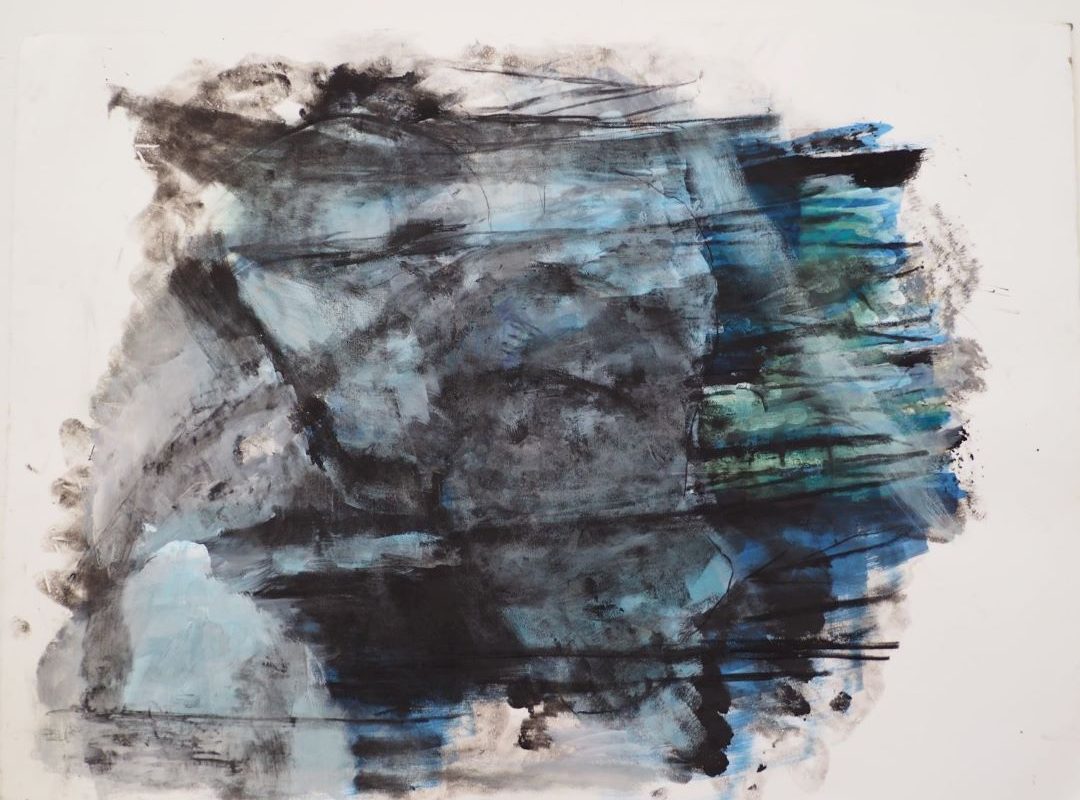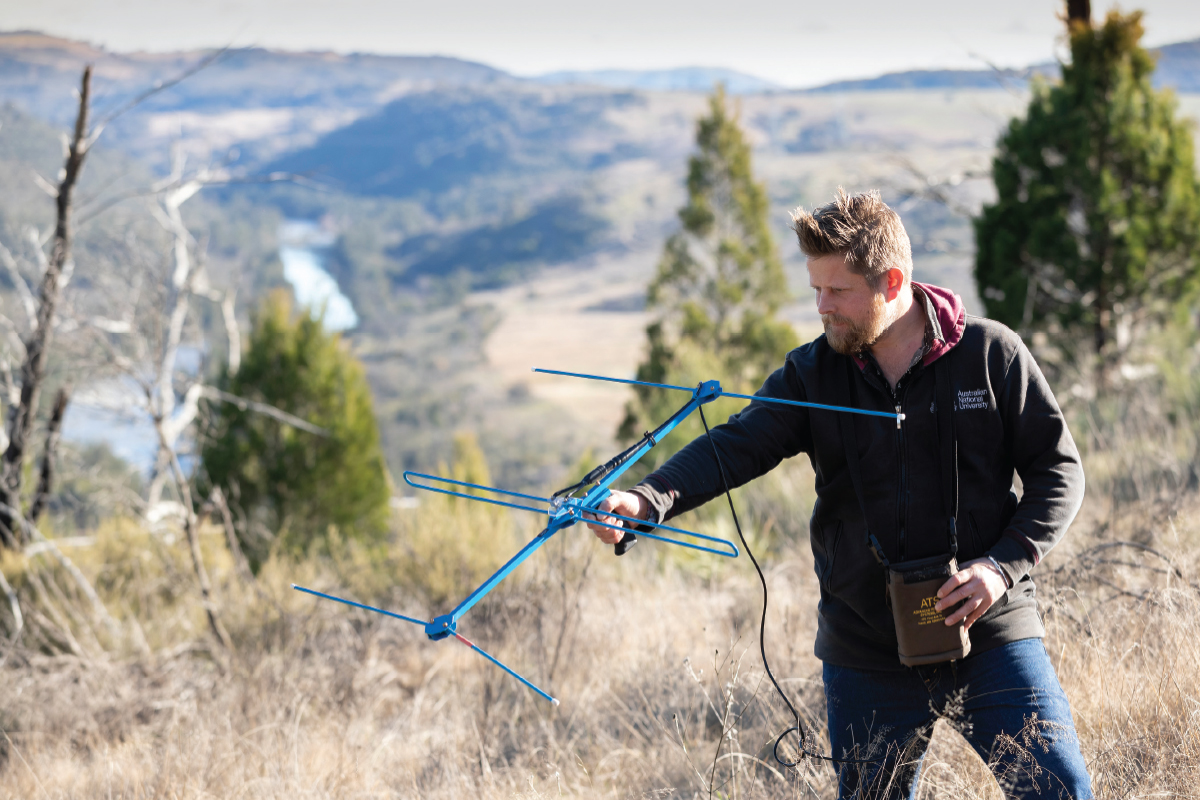Artist Profile: Kathleen Potts
For artist Kathleen Potts, the making of an artwork is not always easy. It’s intuitive, messy, and the product of many late nights.
That’s why Gather in the scene has been a long time coming. Watching her paintings and drawings finally be hung on the walls of the Woolshed Gallery at Strathnairn Arts has been rewarding—but, for Kathleen, the moment she’s enjoyed the most is interacting with the people seeing the show for the first time.
Telling her own personal narrative through the works while offering the opportunity for viewers to open their imaginations and weave their own stories into the scenes, we sat down with Kathleen to talk about her artistic journey and how Gather in the scene came to life.
Tell us a bit about yourself—where did your journey in the world of art begin?
I grew up in country New Zealand in a small, isolated community on the East Coast of the North Island. The landscape had a big presence on me as a child, we had a range of mountains behind us and were surrounded by hills stretching out to the horizon in every other direction. These were big wide-open spaces which I spent a lot of time as a child roaming and exploring. It was a tactile and visceral experience growing up in the country.
It wasn’t until high school that I think I began to really focus on art, especially painting, and printmaking and I absolutely loved art history.
I had a fantastic teacher who organised a school trip to visit several well-known New Zealand artists—including Richard McWhannell, Philippa Blair, Nigel Brown—in their studios in Auckland. This was a pivotal trip and completely mind-blowing for a teenager who had grown up ‘in the middle of nowhere’. Besides my high school art teachers, I had never met any artists before or had any exposure to people using their creativity to make a living.
After high school, I was determined to further my education in fine arts and went on to complete a Bachelor of Fine Arts Degree majoring in painting at the then Quay School of Fine Arts in Whanganui.
Like many small-town Kiwis, travel was a priority and a few years after graduating I moved to Sydney. I have called Canberra home for the last 15 years. It has been in the last five years that I have been in a position to return to painting and drawing more seriously.
What inspired your latest exhibition, Gather in the scene?
The landscape in Canberra is incredibly inspiring and there is a lot about it which reminds me of where I grew up in New Zealand. I love the fact you can look up into the night sky here and see the stars, that we are close to the mountains and rivers, we have those spectacular days of wide-open blue sky, and that we feel the seasons in Canberra. I think this helps ground us to the landscape because we feel its presence here so strongly. There are so many beautiful locations in and around Canberra.
Gather in the scene draws on nature and looks at themes such as impermanency and memory of place. Through gestural mark-making and colour play my aim is to bring real and imagined scenes together. I enjoy blending the real with the abstract and feel it sets up a time to think and opens our imagination to possibilities, to look at the world around us from a different view, and follow the stories which appear as a way to thread our memories together.
Why did you choose to use the local landscapes of Shepherds Lookout, Uriarra Crossing, and Dickson Wetlands to explore the theme of impermanency?
Nature is great at reminding us of our own impermanency. Each of these locations I have been to on more than one occasion—not with the intention necessarily to make artwork but just to enjoy the space. I liked the fact that people were drawn to these places and that they were shared places.
I like the idea of trying to capture ‘the genius loci’, the spirit or special atmosphere of each place, whether it be real or imagined, and present something of the unseen. In some of my work, I have deliberately introduced a sense of the uncanny to the scenes. I am interested in how the perception of a place can change with subtle changes to the environment, and how the memory of place and imagination work together.
These places are a part of our lives here in Canberra and have been an integral part of the Ngunnawal and Ngambri people for thousands of years. More than ever, I think it is important to enjoy your surroundings and recognise that places such as these collectively benefit our lives whether consciously or subconsciously, they forge our identity together and need to be valued and cared for.
What was your process for creating this exhibition?
This exhibition is made up of work selected from the last five years. I felt it was really important to show these works to solidify my focus and to let go of the work so I can work toward the next project. At the moment I am working mainly with acrylic paint on board because I wanted to reduce my use of solvents and am more and more conscious of my own footprint and creating in a healthier way.
The works I have chosen to include in this show include 11 framed drawings and 13 paintings. My process for creating this exhibition included documenting the natural world around me, building up clues, recording details I am drawn to—this could be the light and shadows, movements within a space, colour through drawing and photography, and keeping a journal of ideas.
Reading and music are very important elements of the process too, generating ideas and often linking my thoughts to images in very synchronistic ways. Chance and spontaneity are crucial to my process. Often when I have a blank board in front of me to start, I will put down the first marks and lines using anything other than a paintbrush. I have a number of improvised painting tools I use to make marks like old toothbrushes, dishwashing brushes, rollers, bundles of twigs, rags, rubber bouncy balls, and my own hands.
In several of the works, there are traces of my palm lines visible—I enjoy this trail of history left behind. Artmaking for me is messy and not always easy. At some point, the drawing or painting takes on its own presence and becomes bigger than just marks and colour on a surface and begins to tell a story. This is the thrill of it for me.
Artmaking for me really is a gap between worlds where anything can happen. Everything else fades away and you step into a time out of time which is incredibly mysterious and exciting. That is what keeps me wanting to make art.
What do you hope people will feel when they view Gather in the scene?
I think this collection of work is about imagination and how the landscape shapes our memories and in turn our identity and I hope people will connect with these images and thread their own memories and stories into the images.
What’s next for you?
I would like to work toward another solo exhibition or a collaboration of some kind and want to continue to study themes around the memory of place. I would like to work on a series of large figurative paintings next.
Is there anything else you would like to add?
I am hugely thankful to Strathnairn Arts for providing me with this opportunity to exhibit here and would like more people in Canberra to know about this great spot.
Gather in the scene is showing at Strathnairn Arts until 25 June.





